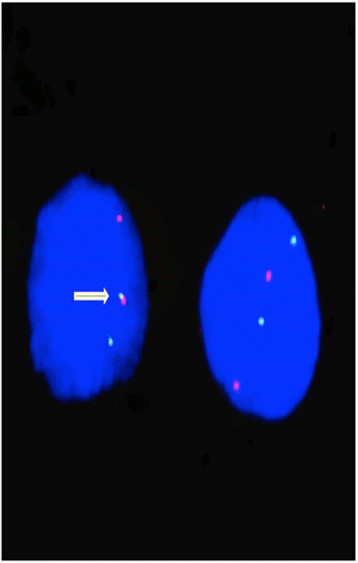A mutation screening of oncogenes, tumor suppressor gene TP53 and nuclear encoded mitochondrial complex I genes in oncocytic thyroid tumors
- PMID: 25880213
- PMCID: PMC4374372
- DOI: 10.1186/s12885-015-1122-3
A mutation screening of oncogenes, tumor suppressor gene TP53 and nuclear encoded mitochondrial complex I genes in oncocytic thyroid tumors
Abstract
Background: Thyroid neoplasias with oncocytic features represent a specific phenotype in non-medullary thyroid cancer, reflecting the unique biological phenomenon of mitochondrial hyperplasia in the cytoplasm. Oncocytic thyroid cells are characterized by a prominent eosinophilia (or oxyphilia) caused by mitochondrial abundance. Although disruptive mutations in the mitochondrial DNA (mtDNA) are the most significant hallmark of such tumors, oncocytomas may be envisioned as heterogeneous neoplasms, characterized by multiple nuclear and mitochondrial gene lesions. We investigated the nuclear mutational profile of oncocytic tumors to pinpoint the mutations that may trigger the early oncogenic hit.
Methods: Total DNA was extracted from paraffin-embedded tissues from 45 biopsies of oncocytic tumors. High-resolution melting was used for mutation screening of mitochondrial complex I subunits genes. Specific nuclear rearrangements were investigated by RT-PCR (RET/PTC) or on isolated nuclei by interphase FISH (PAX8/PPARγ). Recurrent point mutations were analyzed by direct sequencing.
Results: In our oncocytic tumor samples, we identified rare TP53 mutations. The series of analyzed cases did not include poorly- or undifferentiated thyroid carcinomas, and none of the TP53 mutated cases had significant mitotic activity or high-grade features. Thus, the presence of disruptive TP53 mutations was completely unexpected. In addition, novel mutations in nuclear-encoded complex I genes were identified.
Conclusions: These findings suggest that nuclear genetic lesions altering the bioenergetics competence of thyroid cells may give rise to an aberrant mitochondria-centered compensatory mechanism and ultimately to the oncocytic phenotype.
Figures
References
Publication types
MeSH terms
Substances
LinkOut - more resources
Full Text Sources
Other Literature Sources
Medical
Research Materials
Miscellaneous


